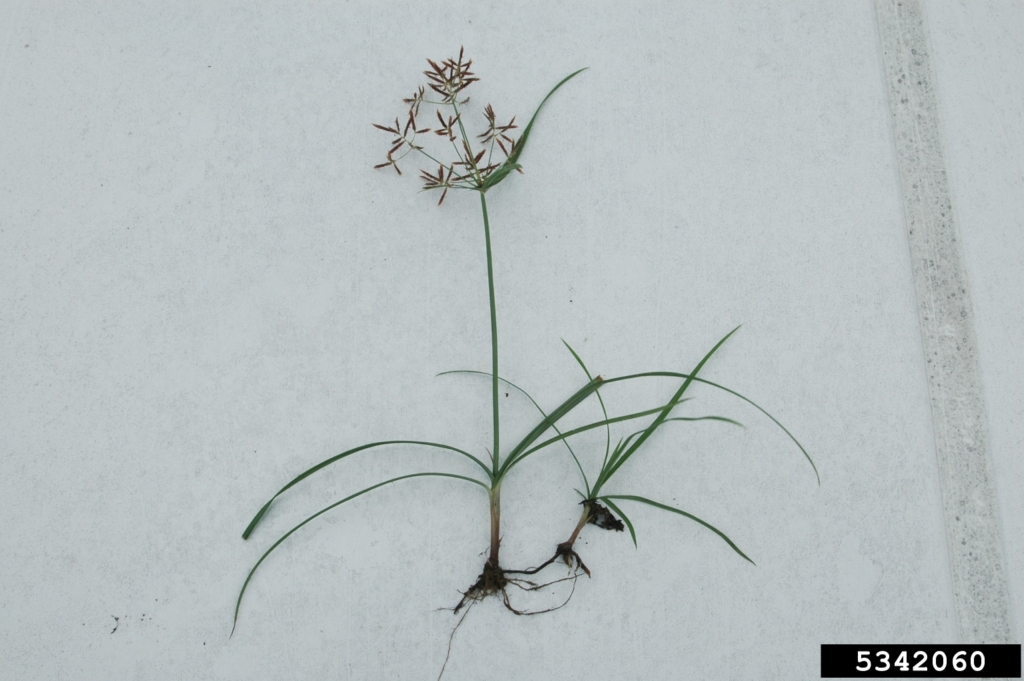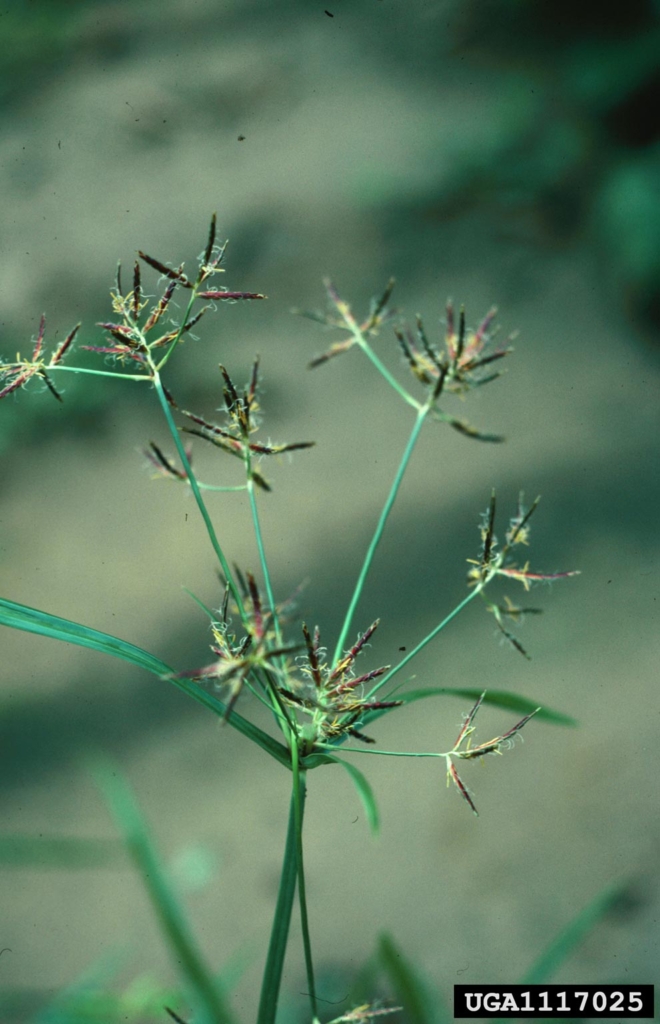Purple Nutsedge
Cyperus rotundus
Plant Description
Purple nutsedge is considered one of the worlds top 10 worst agricultural weeds. It is not yet known to occur in Oregon, but it has become established in parts of California. Once established, it is very difficult to control, as it’s resistant to herbicides and tillage. Purple nutsedge is a perennial sedge that grow 1-2 feet high. It has a cluster of spikelets at the end of three-cornered stems and spreads by underground tubers which form in chains. If you believe you have found purple nutsedge, please report it to the Oregon Invasives Hotline.
Plant Details
| Life Forms | |
|---|---|
| Habitats | |
| ODA Listing | |
| Soil and Moisture Conditions | |
| Suggested Actions | |
| Shade Preference | |
| Mature Height | 2' |
| Distribution | Found in the souteast US and Arizone and California. Not known to exist in Oregon. |
| Control | If you find this plant, report it to https://oregoninvasiveshotline.org. |
| Disposal Methods | Purple nutsedge is easily spread by movement of rhizomes. For help in managing and disposing of this species, please report it! |
| Reproduction and Spread | Spreads by tubers formed on creeping underground rhizomes. A single tuber could produce 99 tubers in 90 days. |
| Introduced | Accidentally introduced to the US in the 1800s. |
| Look Alikes | Yellow nutsedge is a closely related species with brighter green foliage and yellow inflorescences. |
| Impact | A world top-10 agricultural weed. Infests river bottom areas that are critical for food production in developing countries. Forms turions that resist treatment and tillage. |
| More Info |
© Marion Soil and Water Conservation District. All Rights Reserved.


